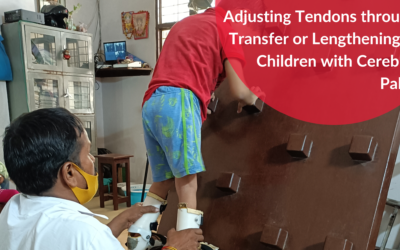Cerebral Palsy Blog
Finding the Right Walker for Your Child with Cerebral Palsy
Cerebral palsy is a life time condition that can make the life of the patient difficult. It happens because of some brain injury at or during birth, leading to activity limitations. Both physical and neurological abilities vary from child to child, and the support...
Effective Speech Therapy for Children Living with Cerebral Palsy
Most children suffering from CP generally have Children Orthopedic Problem controlling the tongue, face, jaw, and chest muscles. This reduces or limits their ability to produce sounds or speak properly. Further, hearing loss can also cause speech delays and problems...
Hemiplegia vs. Hemiparesis: Key Differences Explained
When you talk about cerebral palsy, it is not just about one medical condition. Still, it comes with many associated conditions, making it extremely difficult to manage things. No doubt cerebral palsy has a significant impact on the life of the child, but the related...
Adjusting Tendons through Transfer or Lengthening in Children with Cerebral Palsy
Tendons are a band of tissues in the body that allow us to move. However, if someone has cerebral palsy, it can cause tight muscles and tendons. This tightness, or contraction, reduces the length of muscles and tendons over time. This condition affects both upper...
Hypotonic Cerebral Palsy in Children: Essential Information You Should Know
Cerebral palsy in children is not at all very easy to manage. After all, it can entirely change their life. The medical condition will impact their motor skills, regular activities, and more. Now, there are different forms of cerebral palsy as well that can have a...
Ambulatory Capacity in Cerebral Palsy: Prognostic Criteria and Implications for Intervention
Children who are born with cerebral palsy have a challenging life. However, the ambulatory prognosis of children with CP remains a significant issue for both the doctors and the parents. So, the most frequently asked question by the parents here is whether the child...
Various Symptoms of Dyskinetic Athetoid Cerebral Palsy
Medical professionals regard dyskinetic cerebral palsy as a significant condition. It can often cause physical impairment in several people, mainly youngsters. People with disabilities thus have trouble using their muscles, resulting in sudden, repeated, and twisting...
Functions of Incontinence in Cerebral Palsy?
Cerebral palsy is a highly complicated medical condition, but what is even worse is the associated conditions that come with it. So that you know, cerebral palsy and incontinence unfortunately occur alongside each other in few of children. Most children with cerebral...
Fact Sheet: Gait Patterns in Cerebral Palsy
Individuals who have cerebral palsy might have a combination of musculoskeletal and neurological issues. These include problem in muscle tone, balance, sensation, and abnormal movements that can challenge the patient's walking ability. Additionally, it can result in...
Make a Difference
Support Trishla Foundation's Life-Changing Work for Children with Cerebral Palsy!
Together, we can break barriers and empower children with cerebral palsy. With your generous contribution, Trishla Foundation can continue its vital work in providing therapies, education, and support to these incredible children. Help us create a brighter future by donating today!









